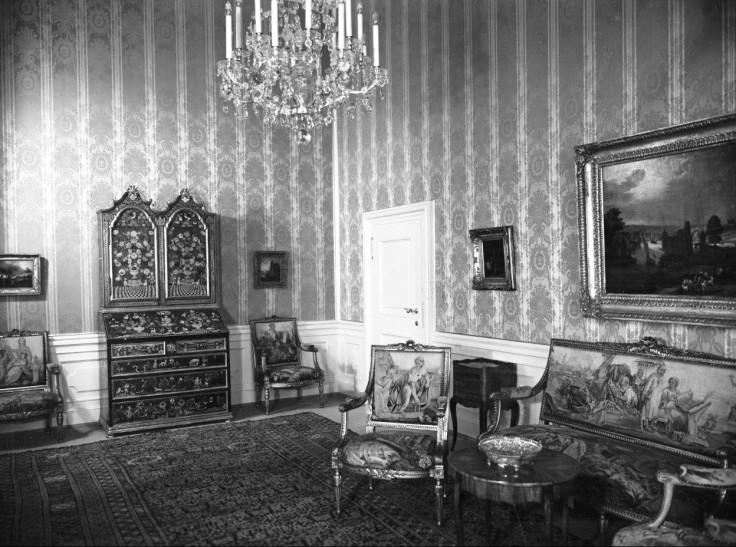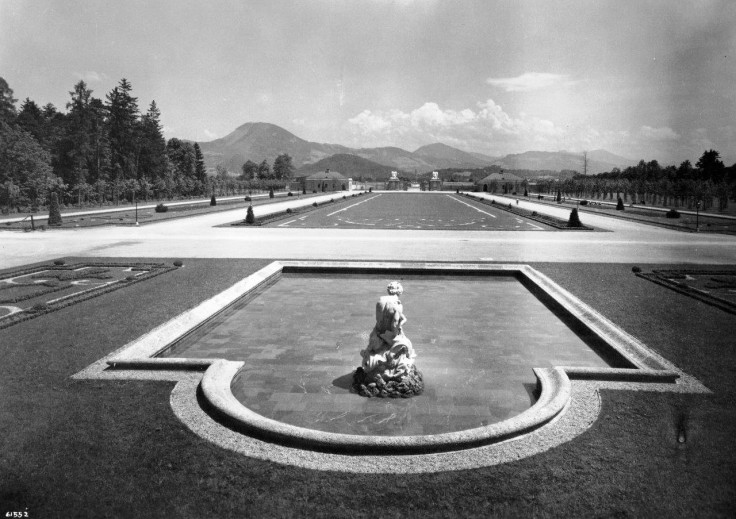Schloss Klessheim: Nazi past of Hitler's lavish Austrian palace uncovered by historians
Twenty paintings acquired by the Nazis during the war were identified in Klessheim Palace.
The most extensive research to date has been conducted to document the Nazi past of Klessheim Palace in Austria. Art historian Imma Walderdorff investigated how the monument was refurbished to serve as a lavish guest house for Adolf Hitler and where the paintings adorning its walls came from.
Klessheim Palace is located in Salzburg and had been a baroque hunting lodge until being profoundly transformed by the Nazis. Its refurbishment was considered to be "important to the war effort".
Walderdorff's project, funded by the Austrian Science Fund FWF, was to conduct the first scientific investigation of the artworks and documents inside the palace complex to understand its political and cultural significance in the context of National Socialism.
Both the palace and its surrounding were organised and decorated in an ostentatious fashion to demonstrate the power of the Nazi regime. The complex had its own railway station and monumental sculptures of eagles – an important Nazi symbol – welcomed the visitors at the entrance gates.
The massive refurbishments at Klessheim Palace sets the building apart from other monuments used by the Nazis under Hitler. "Compared to other structures used by the NS leadership for entertaining, Klessheim is certainly unique because of the massive refurbishments", explains Walderdorff.
It is thought to have been a meeting place for leading Nazis, but Hitler also used it to receive the heads of allied states – from Mussolini to Antonescu of Romania.
"The palace is 30 minutes away from the Obersalzberg (Hitler's home). From 1942 to 1944 most of his meetings (with Mussolini, Ciano, Horty...) were there, but Hitler always went back to the Obersalzberg, he never stayed over night. This might be surprising, but Hitler never planned to have an apartment there for himself", Walderdorff told IBTimes UK.
Paintings in a time of war
The historian's main task was to find out more about the origins of the paintings in the palace, in the hope of learning learn more about Nazi looting and art deals during the war.
To do this, she examined international archives in Berlin, Koblenz, Munich, Paris and Washington and talked to descendants of artists who participated in the refurbishment of the palace. She also inspected the archives of the Land of Salzburg, the current owner of the palace.

Among these archives, Walderdorff identified 20 paintings acquired during the war. Of these, 19 had been acquired by an obscure Berlin-based businessman, Arthur Heinrich Kreiser. Very little is known about him, but he also appears to have been the main provider of all the furniture, paintings and rugs placed inside the palace to decorate it.
"Most of the themes of the 20 paintings are landscapes or mythological scenes, from the 17th and 18th centuries. The first idea was to decorate the palace with objects from the Rothschild family, but Hitler preferred to have these objects for his museum in Linz", Walderdorff said.
So far it's not been possible to determine who the prior owners of the paintings were, and whether the artworks had been rightfully bought or looted.

Other paintings found in the palace appeared to have been loans from Viennese museums arranged by Joseph Goebbels, the feared Nazi minister of propaganda. They decorated the rooms of Klessheim Palace when it served as a residence for the summer festival season, even before it was refurbished as a guest residence and before the war.
The richness of these artworks was meant to impress Hitler's guests and these findings provide the first documentation of the major cultural significance of the building, used by the Nazi regime for representational purposes.
© Copyright IBTimes 2025. All rights reserved.






















